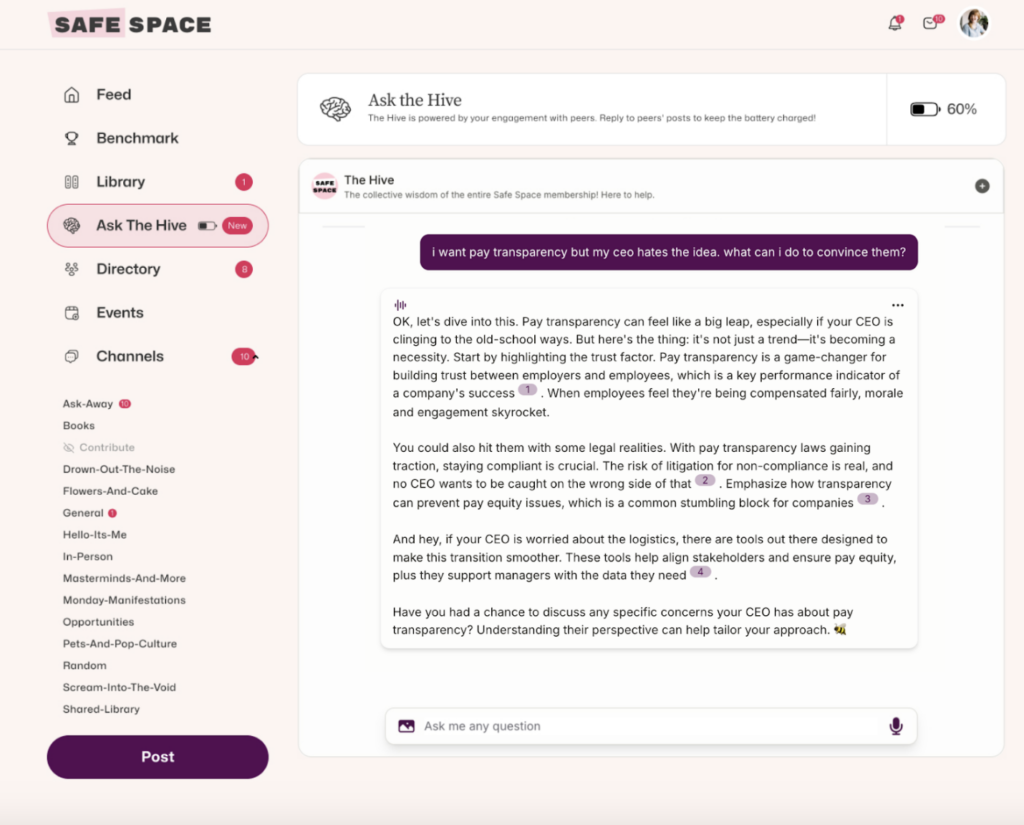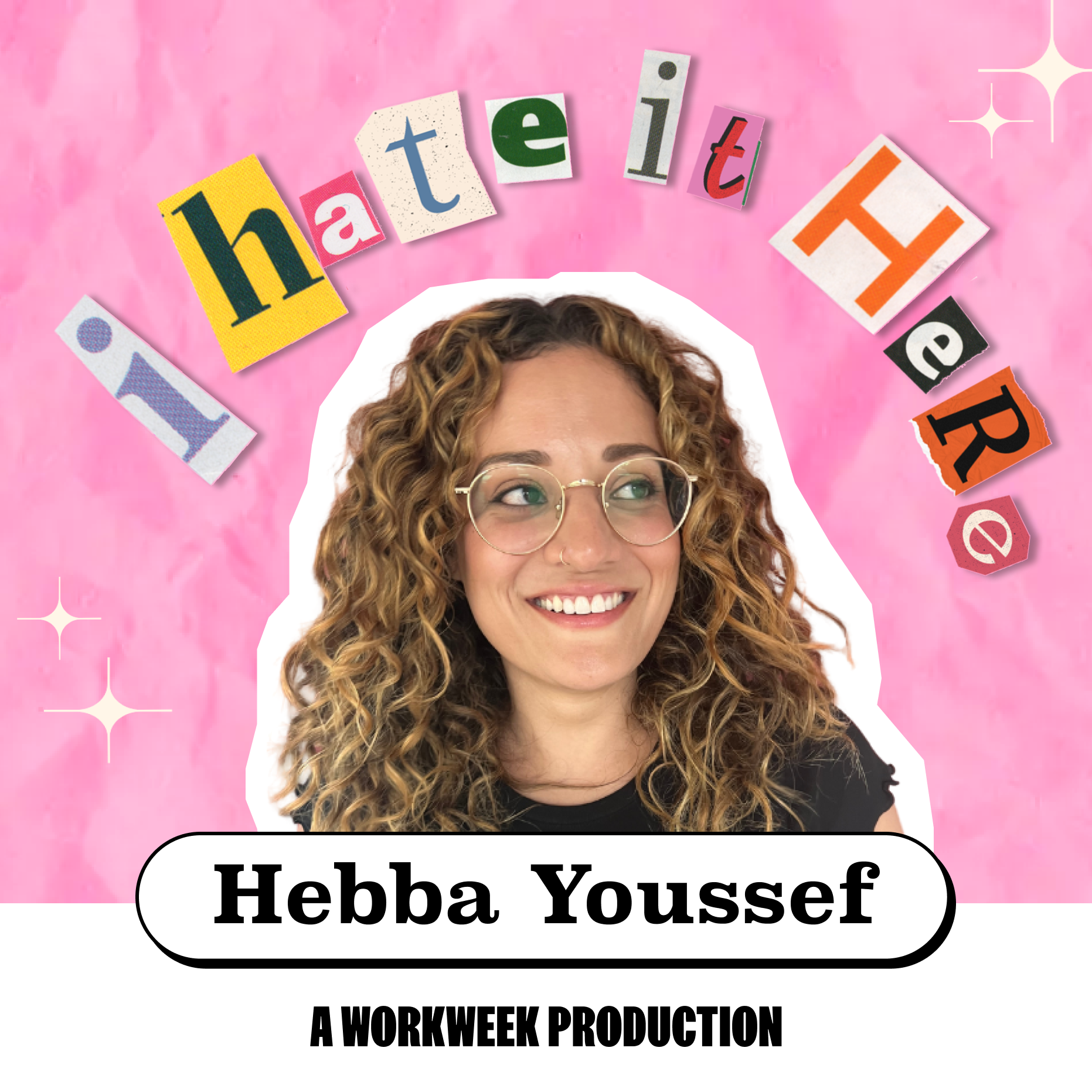Last week I dove into the topic of psychological safety and how to build a culture where employees feel comfortable enough to speak up with ideas, concerns or even to admit mistakes.
Of the 4 stages of psychological safety, the stage I feel isn’t discussed enough is the challenger safety stage.
Challenger safety is about feeling comfortable challenging the status quo or ideas.
Indulge me for a minute! Think about the last time you challenged someone at work. I mean truly looked someone dead in the eye and maybe said something along the lines of, “I don’t agree with your approach.”
How did that make you feel?
Did you get that sinking feeling in your stomach? Did you instantly worry about how this would impact your relationship? Or worse, did you think about how this would impact your growth at the company?
You are not alone. The average work environment isn’t psychologically safe! And we know the pandemic exasperated a few things including psychological safety at work.
Sometimes it can feel downright impossible to challenge someone at work. But it can happen, so please drop me a line if you have challenged someone at work recently. Tell me what you challenged and how it was resolved.
Why does it feel impossible to challenge each other at work?

Challenging an idea or a person at work can be difficult for the following reasons:
- We don’t like change
- We are afraid of hurting feelings
- Women and underrepresented groups don’t feel safe
- Job security
Humans don’t like change: challenging someone means you probably want something to change. And change is scary for folks! Last week I mentioned how studies showed we tend to overestimate what might go wrong and that fear of the unknown makes us more resistant to change.
Feelings: Navigating the complex nature of relationships at work feels like one of the most difficult tasks. When we challenge someone at work we fear that it will damage the relationship. From challenging authority to challenging the greatness of an idea, we have to tread carefully.
Women and underrepresented groups aren’t safe: Women and underrepresented groups are more likely to experience microaggressions and feel less psychologically safe at work. Not to mention, unconscious bias can perpetuate various stereotypes at work that make challenging ideas difficult. Black women have to face the “angry black woman stereotype” in the workplace which can hold them back from contributing. Very unfair.
Job security: when I Googled “how to challenge ideas at work” all the results were about how to challenge your boss and not lose your job. Uhhh that seems problematic? But honestly, it tracks… We’re afraid to challenge superiors or peers at work because of job security.
So, if challenging each other at work is difficult and has all the drawbacks listed above then why would we even do it?
Because innovation depends on challenging ideas.
Innovation and productive disagreements:
One of my favorite childhood memories involves going to Blockbuster with my father and combing the aisles for a worthwhile rental. I loved those Friday nights and spent all weekend looking forward to that trip. Now 20 years later I can just turn on my tv and rent a movie that is still in theaters.
JOIN 150K+ HR LEADERS
Get insights, learnings, and advice on how to build companies and cultures that people actually love.
No spam. Unsubscribe any time.
Since the introduction of the internet the world has rapidly evolved in less than a few decades. It makes me excited for the future but also begs the question, how do we continue to evolve and innovate?
Well, by challenging each other and not being afraid of conflict.
Easier said than done.
In Adam Grant’s Think Again he writes about how many of us never learn the valuable life skill of productive disagreement. You can thank your parents for that.
Many parents choose not to argue in front of their children for fear of impact. But it’s not the frequency of arguments that matters, it’s HOW respectfully the parents argue. It turns out productive arguments actually help flex the creative muscle and teach children to speak up with their ideas.
So if you didn’t grow up in a family that openly handled conflict you may not like conflict or have the tools to handle conflict. It doesn’t help that few workplaces teach employees how to productively challenge ideas or how to handle conflict.
We’ve seen workplaces that pushed the “challenge everything” value quickly metastasize into a culture of assholes.
Cough Uber cough.
But dissent fuels creativity. And innovation and creativity go hand in hand.
To note: Organizations that try to inhibit productive disagreements:
- Experience decision spin
- Lack honest truths from employees
- Might not have the data to make good business decisions
What if you had a framework to teach your employees how to challenge ideas to drive innovation that didn’t turn your workplace into a culture of assholes?
A framework for challenging ideas:
As I mentioned above, challenging ideas doesn’t come naturally for folks and can feel impossible in some workplaces.
If you want a workplace that fuels creativity and drives innovation you will need your employees to feel comfortable challenging ideas. This framework can be used to teach employees the art of productive disagreements.
The setting: you disagree with an idea and you want to offer a different perspective.
Step 1: Confront your inner thoughts. What is your internal dialogue telling you about how you are showing up in this discussion? Are there outside factors that could be impacting you? Ask yourself:
- How do I feel?
- Why am I disagreeing?
- Are any personal feelings impacting how I feel?
No bs: I’ll admit I’ve had moments where I’ve disagreed with someone because our personal relationship was bad. I’m not proud of it and I’m more mindful of it now!
Important note: our personal lives can have an impact on our professional lives. The line between work and life has blurred since the start of the pandemic. If something is going on in your life it can impact how you show up for work. Last week I talked about the red/yellow/green framework. If someone is saying they’re red it might not be the best time to strike up a challenging conversation with them aka read the room.
Step 2: Understand the situation. Do you have all the context? You should understand the situation fully before suggesting a different solution. You would think most folks have all the details before they offer a different solution, but yeah they don’t.
Asking questions will be impactful to understanding the other person’s perspective:
- Could you share some context on how we got here…
- Help me understand…
- What are the impacts of this solution?
I do not want us all to turn into corporate jargon robots and use the same phrases but the reason I offer the phrases above is because language choice is important. When productively disagreeing, using insulting language is harmful.
As much as you want to call an idea or person stupid, maybe refrain? Unless the folks you’re working with won’t take offense to that!
Step 3: Present your thoughts. Key word there: YOUR. Do not speak for others or assume their motivations. It can be easy to project on others but that can be insulting for anyone else in the room.
This is the opportunity to share your thoughts and perspective. You may be asked questions about your thinking instead of viewing it as an attack on your thinking view it as an opportunity to collaborate. Ah, the delicate dance of productive disagreements.
Pro-tip: try to detach your ideas from your identity. When you can do that you are more open to being wrong.
Step 4: Drive to solution. Productive disagreements need to be… productive. Meaning there should be some sort of solution or you descent into argumentland. We’ve all been there where it feels like you’re going in circles and finally someone says “I’m not going to die on this hill!”
This can be the trickiest stage when challenging ideas. Why? Well because the average person isn’t great at compromise or rethinking their stances.
A harsh truth: your idea won’t always be the best one or the path your team takes.
LET GO. Let go of the belief that your ideas are always the best ones. When you do, you become open to learning and the discussion becomes PRODUCTIVE!
Solutions come in all shapes and sizes but the most important part of this step is to accept the agreed upon solution and move on.
A lot of these steps your employees may already be doing on their own! But you can teach this framework in onboarding or internal training to help them navigate challenging ideas in your workplace.
Having a baseline for how to challenge ideas as an organization can be so very powerful.


